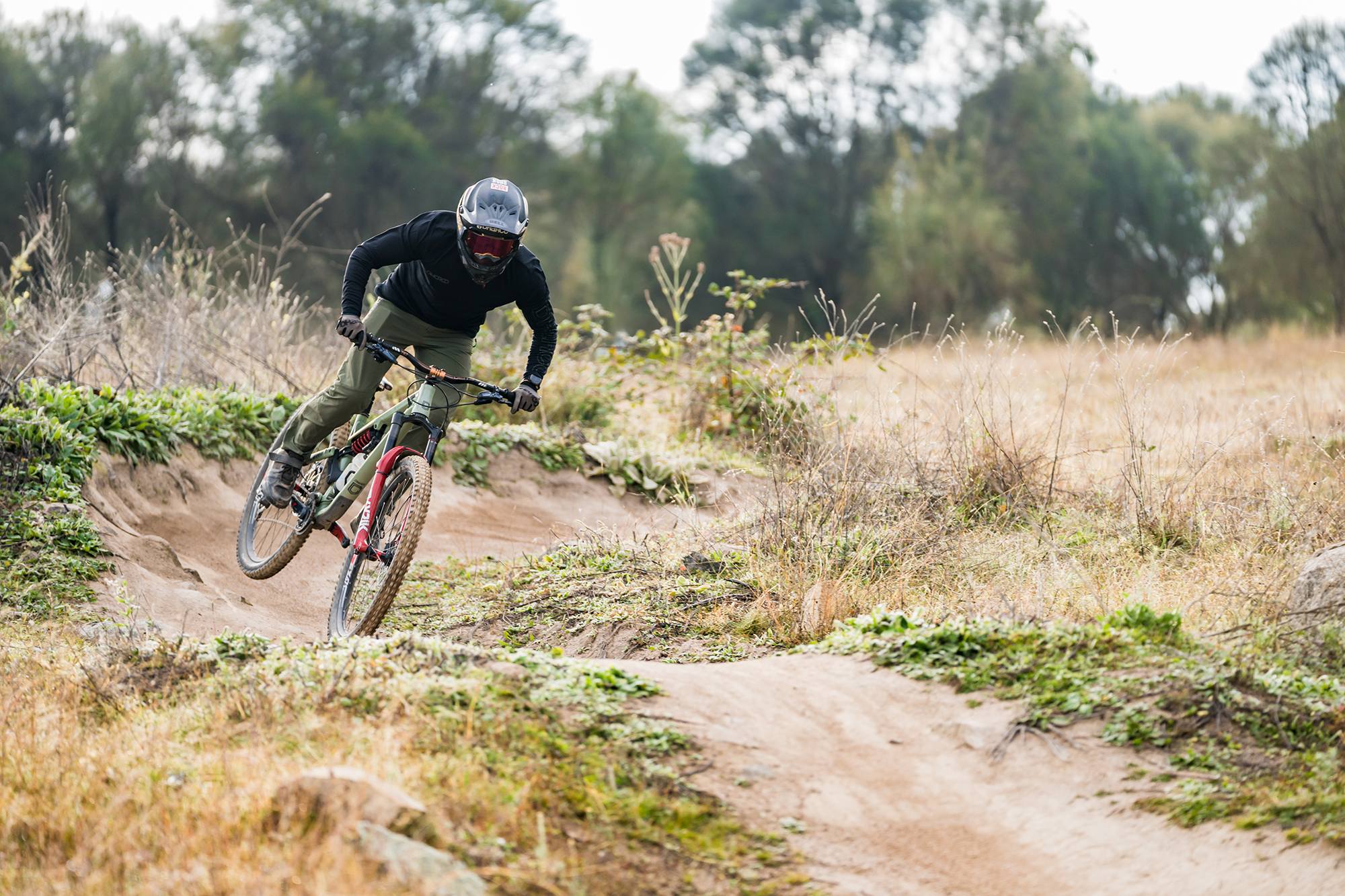Welcome to your latest Master Class, this time, how to shred Switchbacks with your teacher, Timmy eaton
A switchback is a pair of opposing corners on a trail and they come in all shapes and sizes. Tight switchbacks, where the corners are spaced close together and you’ll need to change direction in the blink of an eye. Wide open switchbacks where the corners are spaced further apart allowing more time for setting yourself up (body position, entry speed, etc), switchbacks on super steep sections of trail, left-to-right, right-to-left, there are literally a million and one different types of switchbacks that you can encounter on a trail. In this article one of Australia’s fastest mountain bikers will give you the insight on how to master these tricky corner combos.
Slapping switchbacks can be one of the best feelings on a mountain bike. Especially when you get them right and carry good speed through the section. Some of the key things you need to consider are set up, body position, braking, angulation and rotation.”
Timmy Eaton
ENTRY:
As you’re coming into the corner you want to have a nice low ready position centred on the bike, chin over stem, level pedals. You want to get your braking done before the corner in a straight line if possible as this is where you’re most efficient and able to maintain control and traction. Start to look ahead through the corner this is where the body position starts to change to start the lean angle at the beginning of the corner.
IN THE CORNER:
Looking through to the exit of the corner then angulating the bike by extending your inside arm straighter and keeping your outside elbow up and bent. In tighter corners it can help by rotating the hips, a good analogy is essentially pointing your belly button to where you want to go through the corner. If it’s a fast steeper corner for a bit more stability very lightly feathering the rear brake can also help maintain front wheel traction and keep control to minimize bike acceleration.
TRANSITIONING:
As you come out of the first corner you will need to keep looking ahead towards the next corner and getting ready to do the process all over again. Here you will be straightening up the bike and starting the set up and braking stage again, if needed. How fast this all happens depends on how close the corners are together. But start at a comfortable speed you can consistently execute and go from there. The wider you can get to open up the next corner the better, sometimes going a little slower and more controlled through the first corner can allow for much better set up into the second allowing you to carry much more speed through the whole section.
The key thing to keep in mind when you’re building up your riding skills and confidence is that practise makes perfect. Practicing a section over and over can help make things fall into place, start at a nice comfortable controlled speed and add more speed once you are comfortable. [R]








